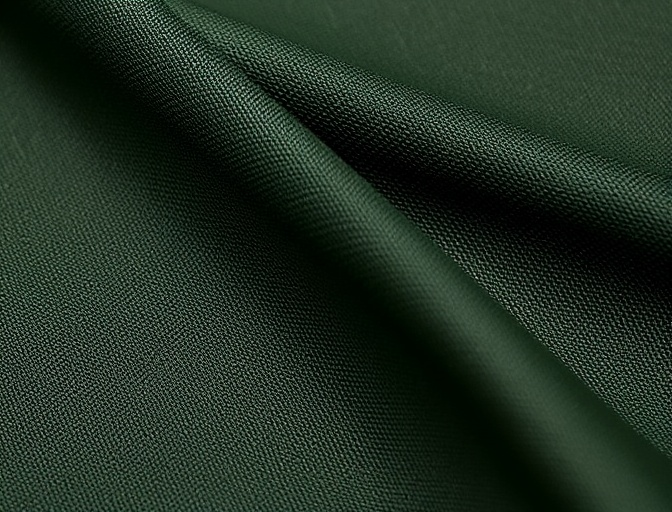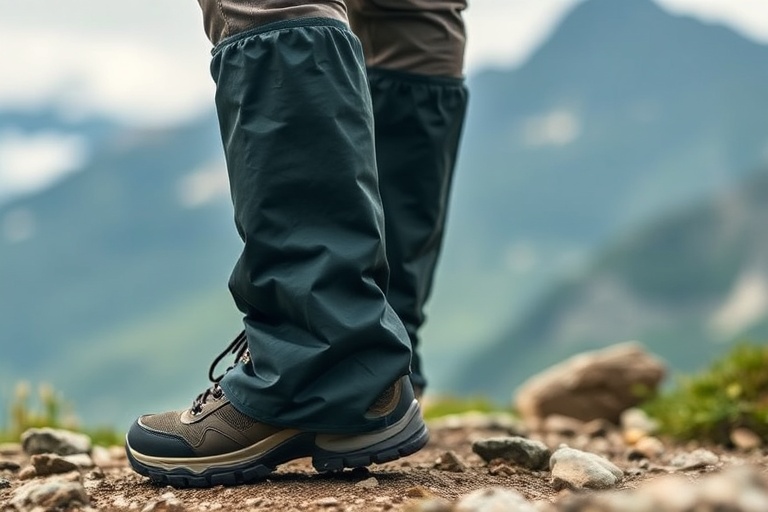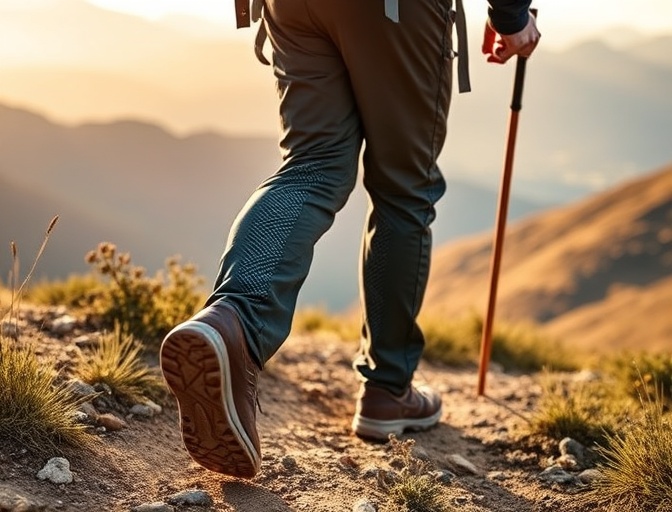Snake Gaiter Materials Explained
Understand the fabrics and technologies that keep you safe outdoors
The material of your snake gaiters is the most critical factor determining their effectiveness, durability, and comfort. From lightweight nylon for casual hikers to heavy-duty Oxford fabric for professional outdoor workers, each material offers unique benefits and trade-offs.
Understanding these materials helps you make informed decisions based on your specific needs—whether you prioritize maximum protection, all-day comfort, waterproofing, or budget considerations. The right material choice can mean the difference between reliable protection and inadequate coverage when it matters most.
Expert Tip
No single material excels in every category. The best choice depends on your primary activity, local climate, and personal priorities for weight, durability, and protection level.
Common Snake Gaiter Materials
Each material offers distinct advantages and trade-offs. Understanding these differences helps you choose the right protection for your specific needs.

Oxford Fabric (600D/900D)
Heavy-duty woven fabric with exceptional tear resistance and waterproof coatings.
Pros
- Maximum puncture resistance
- Excellent waterproofing capability
- Long-lasting durability
- Professional-grade protection
- Handles rough terrain well
Cons
- Heavier than alternatives
- Less breathable
- Higher cost
- Can feel stiff initially
Best For:
Professional work, hunting, extreme conditions
Polyester
Lightweight, quick-drying synthetic fabric that balances protection with comfort.
Pros
- Lightweight and comfortable
- Quick-drying properties
- Budget-friendly option
- Good flexibility
- Easy to clean
Cons
- Less puncture resistance
- Moderate durability
- Limited waterproofing
- May tear with heavy use
Best For:
Casual hiking, day trips, budget-conscious users
Nylon
Flexible synthetic material offering good balance of weight, durability, and water resistance.
Pros
- Excellent flexibility
- Good water resistance
- Lightweight construction
- Resists abrasion well
- Comfortable for long wear
Cons
- Moderate bite protection
- Can degrade in UV light
- Less puncture resistant
- May retain odors
Best For:
Long-distance hiking, backpacking, trail running
Polypropylene (PP) Panels
Rigid plastic panels providing maximum bite protection through hard shell construction.
Pros
- Maximum bite resistance
- Puncture-proof protection
- Easy to clean
- Chemical resistant
- Long-lasting material
Cons
- Heavy and bulky
- No breathability
- Uncomfortable for long wear
- Limited flexibility
- Higher cost
Best For:
Professional snake handling, extreme risk areas
Leather/Canvas (Traditional)
Traditional natural materials offering rugged protection with classic outdoor appeal.
Pros
- Natural materials
- Very durable
- Classic appearance
- Improves with age
- Good puncture resistance
Cons
- Heavy weight
- Slow to dry
- Requires maintenance
- Less waterproof
- Can become stiff
Best For:
Ranch work, traditional outdoor activities
Waterproofing & Breathability
The eternal trade-off in outdoor gear: maximum water protection versus comfortable moisture management. Understanding different waterproofing technologies helps you choose the right balance for your activities.
DWR (Durable Water Repellent)
Surface treatment that causes water to bead and roll off
Pros
- Maintains breathability
- Lightweight
- Quick-drying
Cons
- Wears off over time
- Not fully waterproof
- Requires reapplication
PU (Polyurethane) Coating
Flexible waterproof layer applied to fabric interior
Pros
- Excellent waterproofing
- Cost-effective
- Flexible
Cons
- Reduced breathability
- Can delaminate
- Heavier feel
Membrane Technology
Advanced breathable waterproof layers like Gore-Tex
Pros
- Best of both worlds
- Long-lasting
- Professional grade
Cons
- Higher cost
- Complex construction
- Requires care
Wax Treatment
Traditional wax coating for natural materials
Pros
- Renewable protection
- Natural approach
- Good for leather
Cons
- Poor breathability
- Requires maintenance
- Can attract dirt
Understanding the Waterproof vs. Breathable Trade-off
Maximum Waterproofing
Complete water protection but minimal breathability. Best for short-duration activities in wet conditions.
Balanced Approach
Good water resistance with acceptable breathability. Ideal for most outdoor activities and varying conditions.
Maximum Breathability
Excellent moisture management with basic water resistance. Perfect for high-activity use in dry conditions.
Durability & Longevity
Understanding what makes materials last helps you invest in gaiters that provide reliable protection for years. Different factors affect durability in various outdoor conditions.
Key Durability Factors
Abrasion Resistance
How well material withstands rubbing against rocks, branches, and rough surfaces
Top Materials:
Puncture Resistance
Ability to resist penetration from thorns, fangs, and sharp objects
Top Materials:
UV Degradation
Resistance to weakening and color fading from prolonged sun exposure
Top Materials:
Seam Integrity
Strength of stitching and bonding points under stress and use
Top Materials:
Chemical Resistance
Ability to resist damage from oils, acids, and environmental chemicals
Top Materials:
Tear Propagation
How quickly small tears spread into larger failures
Top Materials:
Expected Lifespan by Material
| Material | Typical Use | Heavy Use | Conditions | Maintenance |
|---|---|---|---|---|
| 900D Oxford Fabric | 5-8 years | 3-5 years | Professional daily use, rough terrain | Low |
| Premium Nylon | 3-5 years | 2-3 years | Regular hiking, moderate conditions | Low-Medium |
| Polyester | 2-4 years | 1-2 years | Casual use, light conditions | Low |
| Leather/Canvas | 8-15 years | 5-10 years | With proper maintenance and care | High |
| PP Panels | 10+ years | 7-10 years | Excellent durability, minimal wear | Very Low |
Maximizing Material Longevity
Maintenance Tips
- Clean after muddy or dusty conditions
- Air dry completely before storage
- Reapply DWR treatments annually
- Store in cool, dry location
Usage Best Practices
- Avoid unnecessary contact with abrasive surfaces
- Check for damage after each use
- Repair small tears immediately
- Rotate between multiple pairs for heavy use
Comfort & Weight Considerations
Finding the sweet spot between protection and comfort depends on your activity level, duration of use, and personal tolerance for weight. Different materials offer distinct comfort profiles.
Key Comfort Factors
Weight Distribution
How material weight affects leg fatigue during extended use
Lightweight Materials
Nylon, Polyester - Minimal fatigue even on long hikes
Heavy-Duty Materials
Oxford, PP Panels - Noticeable but manageable for shorter periods
Flexibility & Movement
Material flexibility affecting natural walking stride and comfort
Lightweight Materials
Excellent flexibility, natural movement patterns
Heavy-Duty Materials
Reduced flexibility, may require adjustment period
Heat Retention
How materials trap heat and affect temperature regulation
Lightweight Materials
Better breathability, cooler in warm conditions
Heavy-Duty Materials
Higher heat retention, can be warm in summer
Moisture Management
Ability to wick away perspiration and maintain comfort
Lightweight Materials
Quick-drying, good moisture transport
Heavy-Duty Materials
Slower drying, may retain moisture longer
Weight Categories & Trade-offs

Ultralight
Under 1.5 lbsMaterials:
Pros
- Maximum mobility
- All-day comfort
- Minimal fatigue
Cons
- Reduced protection
- Less durable
Best For:
Long-distance hiking, trail running, backpacking
Lightweight
1.5 - 2.5 lbsMaterials:
Pros
- Good protection
- Comfortable for hours
- Versatile
Cons
- Moderate durability
- Basic waterproofing
Best For:
Day hiking, casual outdoor work, weekend adventures
Standard
2.5 - 3.5 lbsMaterials:
Pros
- Excellent protection
- Good durability
- Reliable
Cons
- Heavier feel
- Can be warm
Best For:
Professional work, hunting, rugged terrain
Heavy-Duty
Over 3.5 lbsMaterials:
Pros
- Maximum protection
- Exceptional durability
- Professional grade
Cons
- Weight fatigue
- Reduced flexibility
- Higher cost
Best For:
Snake handling, extreme conditions, daily professional use
Finding Your Comfort Balance
Duration Priority
For activities over 4 hours, prioritize lighter materials even if protection is slightly reduced. Comfort becomes critical for performance and safety.
Risk Assessment
High-risk environments justify heavier protection. Short-duration, high-risk activities can accommodate weight for maximum safety.
Personal Tolerance
Consider your fitness level and experience. New users often prefer lighter options initially, upgrading to heavier protection as tolerance builds.
Choosing the Right Material
Your primary activity and environment determine the ideal material balance. Here are expert recommendations based on specific use cases and priorities.

Hiking & Trekking
Primary Recommendation:
Alternative Options:
- Quality 600D Oxford for rugged trails
- DWR-treated fabrics for wet conditions
Key Priorities:
Why This Choice:
Long-duration wear requires comfort over maximum protection. Weight savings reduce fatigue on extended trails.
Hunting
Primary Recommendation:
Alternative Options:
- Heavy nylon with reinforcement
- Leather for traditional approach
Key Priorities:
Why This Choice:
Balance of protection and stealth movement. Moderate weight acceptable for shorter hunting sessions.
Farm & Ranch Work
Primary Recommendation:
Alternative Options:
- Leather with reinforcement
- Heavy canvas construction
Key Priorities:
Why This Choice:
Daily exposure to hazards justifies maximum protection. Professional work environment requires reliability.
Yard Work & Gardening
Primary Recommendation:
Alternative Options:
- Nylon for frequent use
- Budget-friendly options
Key Priorities:
Why This Choice:
Occasional use allows lighter protection. Comfort and convenience prioritized over maximum durability.
Professional Snake Handling
Primary Recommendation:
Alternative Options:
- Multi-layer Oxford construction
- Kevlar-reinforced materials
Key Priorities:
Why This Choice:
Life-safety application requires absolute maximum protection regardless of weight or comfort considerations.
Budget-Conscious Protection
Primary Recommendation:
Alternative Options:
- Entry-level nylon
- 600D Oxford on sale
Key Priorities:
Why This Choice:
Essential protection within budget constraints. Focus on proven materials at lower price points.
Quick Decision Matrix
Long Duration Use
Activities over 4 hours where comfort prevents fatigue
Balanced Needs
Moderate protection with reasonable comfort requirements
Maximum Protection
High-risk environments where safety is paramount
Making the Right Material Choice
Understanding snake gaiter materials empowers you to make informed decisions based on your specific needs, environment, and priorities. No single material excels in every category—the key is matching material strengths to your primary use case.
Whether you prioritize ultralight comfort for long hikes, maximum protection for professional work, or budget-friendly reliability for occasional use, there's a material combination that meets your requirements. Consider your activity duration, risk level, and personal comfort preferences when making your choice.
Key Takeaways
Oxford fabric offers the best balance of protection and durability for most users
Nylon and polyester excel for long-duration activities where comfort is critical
PP panels provide maximum protection but sacrifice comfort and flexibility
Waterproofing and breathability exist in trade-off relationship
Your primary activity should drive material choice more than price
Ready to Choose Your Snake Gaiters?
Now that you understand materials, explore our comprehensive guides to find the perfect gaiters for your needs.
Explore Related Guides
Complete Snake Gaiter Buying Guide
Comprehensive guide covering all aspects of choosing the perfect snake gaiters
Snake Gaiter Sizing Guide
Learn how to measure and choose the right size for maximum comfort and protection
Waterproof Snake Gaiters Guide
Detailed analysis of waterproof technologies and best options for wet conditions